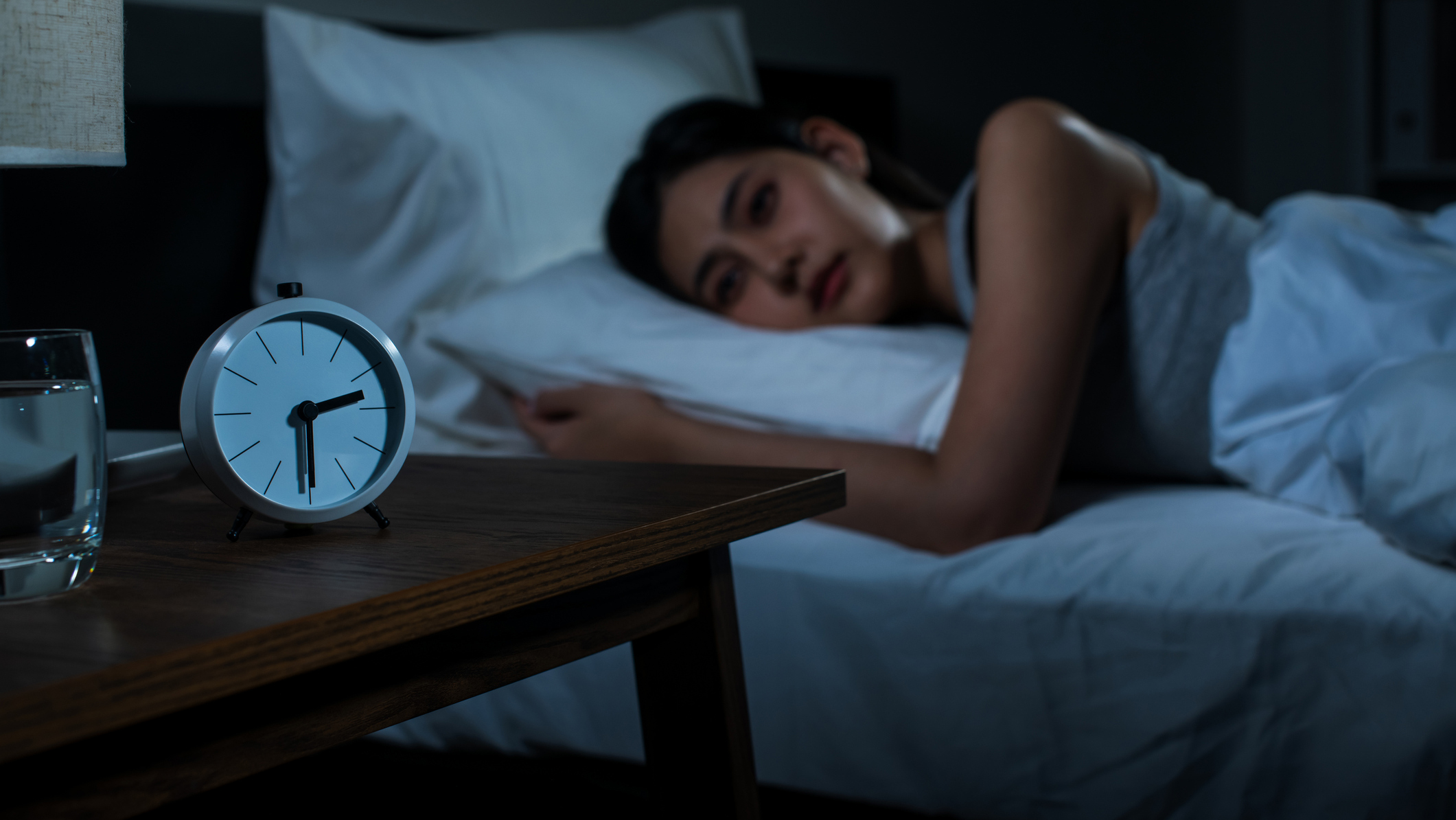iPhone X vs iPhone 8 vs iPhone 7: Which One's Right For You?
Here's how the new iPhone X and iPhone 8 stack up against Apple's former flagships.
Apple's calling the new iPhone X the greatest smartphone it's ever made, and while we're impressed with what we've seen of the phone thus far, it also happens to be the most expensive iPhone ever at $999. Based on our iPhone X review, though, this phone is definitely worth the splurge.
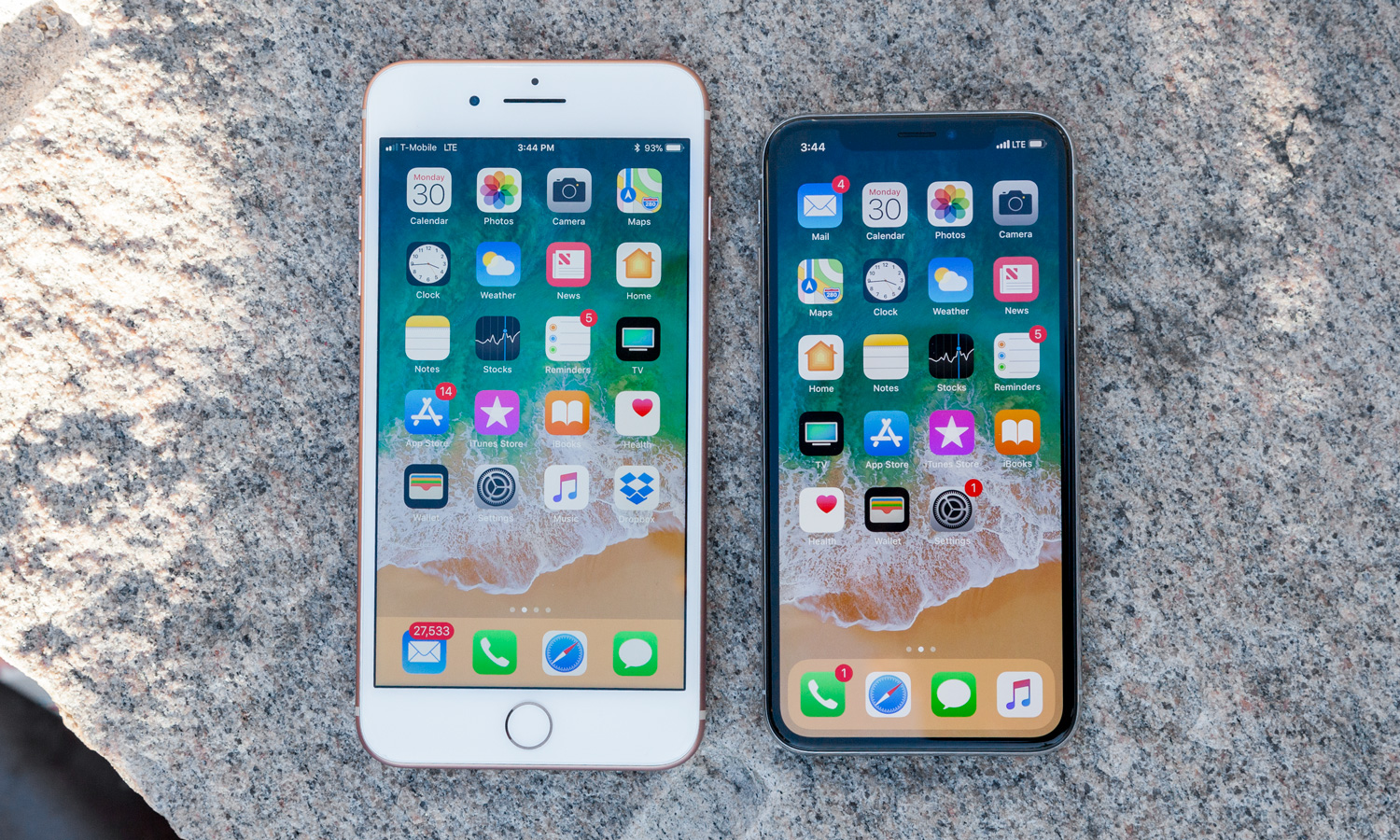
But what if that Super Retina OLED display and depth-sensing camera are too rich for you? The iPhone 8 and iPhone 8 Plus pack a lot of the same goodies starting at $699 and $799. The iPhone 7 isn't going away, either — and it's now $100 cheaper than it was before. So which iPhone should you pick? Here's your guide to how they compare.
| iPhone X | iPhone 8 | iPhone 7 | |
| Starting price | $999 | iPhone 8: $699; iPhone 8 Plus: $799 | iPhone 7: $549; iPhone 7 Plus: $669 |
| Screen size (pixels) | 5.8 inches (2436 x 1125 pixels) | iPhone 8: 4.7 inches (1334 x 750 pixels), iPhone 8 Plus: 5.5 inches (1920 x 1080 pixels) | iPhone 7: 4.7 inches (1334 x 750 pixels)iPhone 7 Plus: 5.5 inches(1920 x 1080 pixels) |
| Weight | 6.14 ounces | iPhone 8: 5.22 ouncesiPhone 7 Plus: 7.13 ounces | iPhone 7: 4.87 ouncesiPhone 7 Plus: 6.63 ounces |
| Thickness | 7.7mm | iPhone 8: 7.3mm,iPhone 8 Plus: 7.5mm | iPhone 7: 7.1mm, iPhone 7 Plus: 7.3mm |
| Processor | A11 Bionic | A11 Bionic | A10 Fusion |
| Battery life | 10:49 | iPhone 8: 9:54;iPhone 8 Plus: 11:16 | iPhone 7: 9:03; iPhone 7 Plus: 10:35 |
| Storage | 64GB, 256GB | 64GB, 256GB | 32GB, 128GB, 256GB |
| Camera (rear/front) | Dual 12-MP/7-MP | iPhone 8: 12-MP/7-MP iPhone 8 Plus: Dual 12-MP/7-MP | iPhone 7: 12-MP/7-MP iPhone 7 Plus: Dual 12-MP/7-MP |
| Special features | Face ID, Qi wireless charging, Fast-charging, Animoji | Qi wireless charging, Touch ID, Fast-charging | Touch ID |
MORE: The Best iPhone X and iPhone 8 Carrier Deals
Design
The iPhone X's revolutionary (for Apple) new look drops the home-button and its bezels, except for that tiny cutout for its front-facing cameras. While this is an attractive aesthetic that follows the industry patterns in turning the smartphone into one giant screen, it introduces a learning curve.
Primarily, without a home button, you're going to be swiping a lot more. You need to perform a half-swipe from the bottom edge to get the app-switcher, or perform a full swipe up to get to the home screen. If you're not looking to learn a new set of gestures just yet, you'll like the iPhone 7 and 8 a lot more, as their designs retain the home button.
The iPhone 8 also offers a new look, but just on its rear. Apple's dropped the aluminum backs of the iPhone 7 to give the 8 and 8 plus a glass pane, which allows for wireless charging using the Qi standard.
The 7.7 millimeter-thick, 6.14-ounce iPhone X is thicker than some of its siblings, but it's still lighter than others. So while the iPhone 8 Plus (7.5mm; 7.13 ounces) and iPhone 7 Plus (7.3mm; 6.63 ounces) are thinner and heavier, the iPhone 8 (7.3mm, 5.22 ounces) and iPhone 7 (7.1mm, 4.87 ounces) are thinner and lighter than the iPhone X.
Sign up to get the BEST of Tom's Guide direct to your inbox.
Get instant access to breaking news, the hottest reviews, great deals and helpful tips.
While the iPhone 7 and 7 Plus come in Black, Jet Black, Gold, Rose Gold and Silver, you lose color options in the more expensive models. The iPhone 8 is sold only in Silver, Space Gray and Gold, while the iPhone X is only going to be in Silver and Space Gray.
Display
While the iPhone X's 5.8-inch display is bigger than the 4.7-inch screens in the iPhone 7 and 8 and the 5.5-inch panels in the iPhone 7 Plus and 8 Plus, size isn't the only reason to upgrade. The largest iPhone also features an OLED panel, another first for Apple.
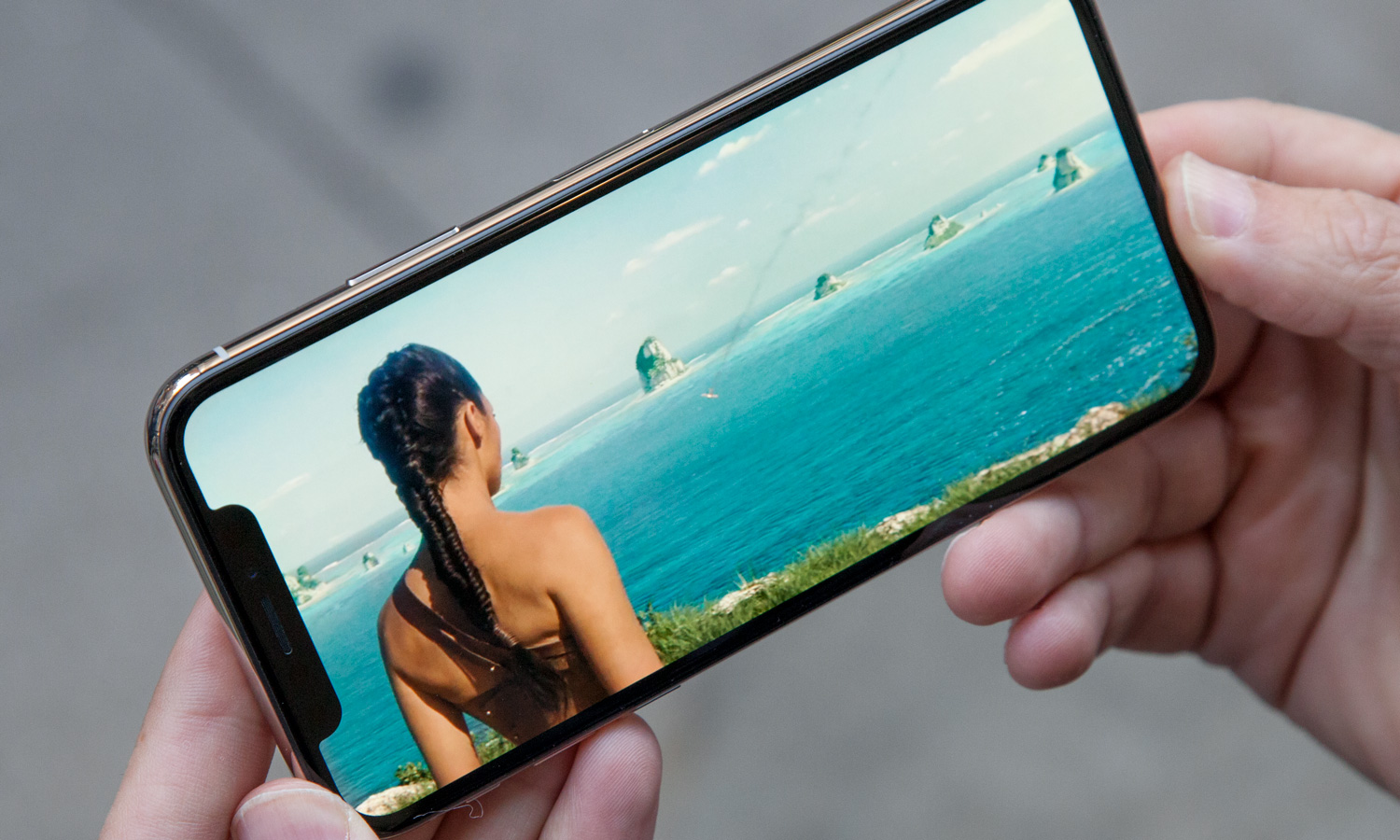
Why are OLED displays so important? As anyone with a Galaxy phone one can tell you, they offer richer colors, deeper blacks and wider viewing angles, than the LCD displays found in the iPhone 7 and 8.
MORE: iPhone X Is King of OLED Screens
The iPhone X's 2436 x 1125-pixel resolution is also higher than those in the 7 and 8, with Plus-sized versions packing 1920 x 1080-pixel panels and the standard options going with 1334 x 750 displays.
The iPhone 7, 8 and X phones all output images in the P3 wide color gamut, but only the iPhone 8 or X come with True Tone color, which adjust its tone calibration on the fly, matching the lighting around you.
Cameras
The cameras in the iPhone 8 and X enable a whole host of tricks, but the X does have some exclusive capabilities that might convince some to pay that extra dough.
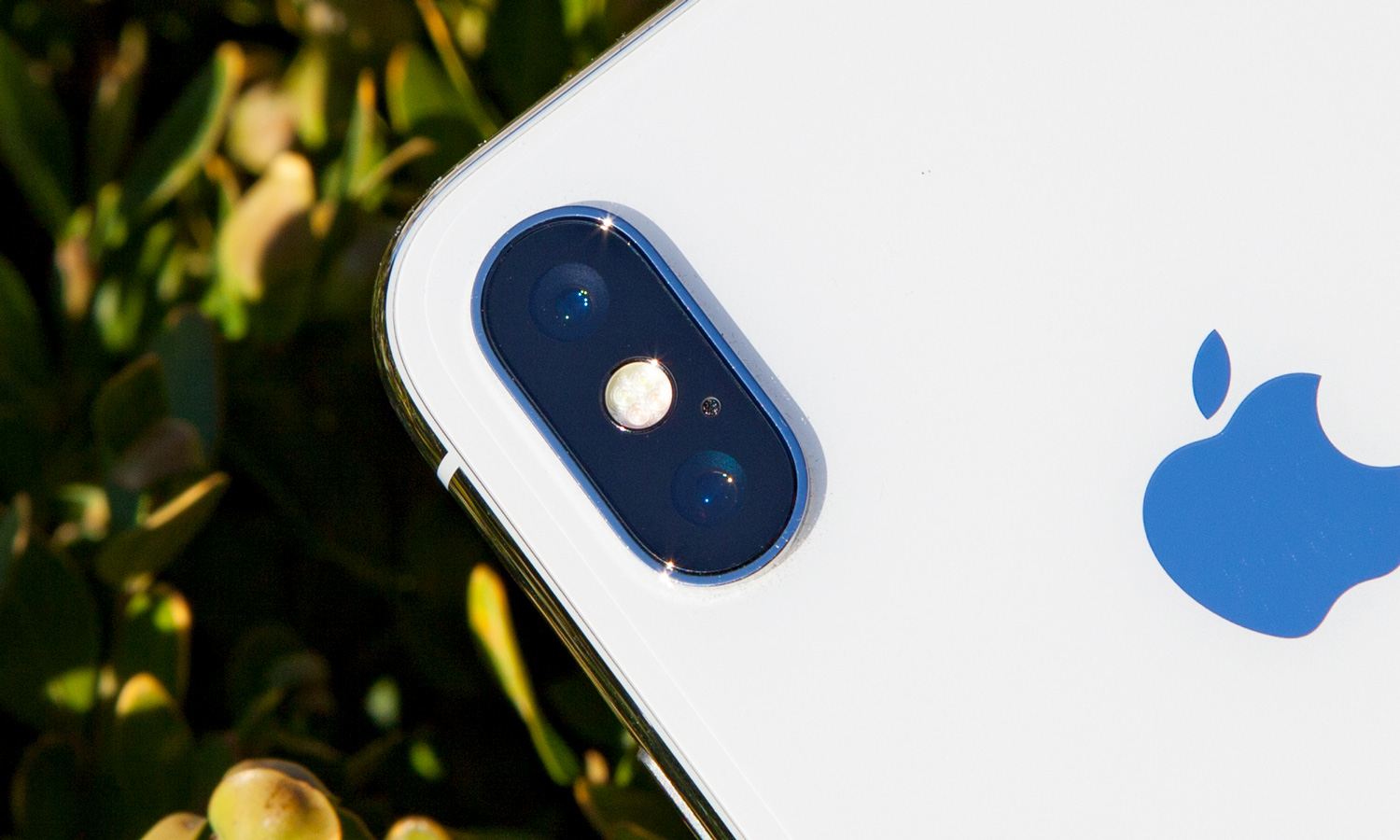
Primary among those features is far better selfies, as only the X's 7-megapixel TrueDepth Camera offers Portrait mode photos. The rear cameras in both the the iPhone X and 8 offer Portrait Lighting, a new technology that maps your face for more-well-lit photos. We were impressed by the new feature when we tested the dual rear cameras on the iPhone 8 Plus, (which is why we recommend that model over the iPhone 8).
Also, iPhone X users will snap slightly clearer photos when using the 2x optical zoom, including those taken in low-lighting situations. That's thanks to its rear telephoto lens, which features a f/2.4 aperture that takes in more light. (The telephoto lens on the iPhone 8 Plus has a smaller f/2.8 aperture.) The iPhone X's telephoto lens also packs optical image stabilization (OIS), which means both of that smartphone's sensors benefit from this feature, while the iPhone 8 only offers OIS in one of its cameras, the f/1.8 wide-angle sensor.
The iPhone X and 8 Plus also feature dual rear-facing 12-megapixel sensors that can record up to 4K video at 60 frames per second (and 1080p clips at 240fps for super-slo-mo). However, both of the iPhone X's rear shooters have optical image stabilization, compared to one for the iPhone 8 and iPhone 7 Plus.
The iPhone X's 7MP selfie cam shoots 1080p video at up to 60fps, while the front-facing lens on the 8 Plus shoots 1080p video at up to 30fps.
Both the iPhone 8 and X cameras are built for Augmented Reality technology, with customization for low light recording and 60 fps smoothness. Also, the phones feature new gyro and accelerators.
The iPhone 7's cameras are similar (one rear-mounted 12-MP sensor in the 4.7-inch iPhone 7 and two in the Plus sized models), but the big differences are in frame-rates. The 4K footage from the iPhone X and iPhone 8 at 60fps is twice as fast as the iPhone 7 provides, and the 1080p video at 240fps rate is four times as fast. Apple didn't even advertise the frame-rate of the iPhone 7's selfie-cam.
After testing the iPhone X's camera — including a head-to-head showdown with the Pixel 2 XL — we think Apple's newest smartphone is the best camera phone available, though the iPhone 8 Plus is a very good option, too.
Security
The iPhone X introduces Face ID, which uses 3D facial recognition for unlocking the iPhone X and authenticating its payments. It also drops the Touch ID fingerprint sensor. By replacing Touch ID (which wasn't broken) for Face ID, Apple's taking away an unlock method that users are familiar with. Based on our testing, Face ID works well in all sorts of lighting conditions, but it's not always as fast as Touch ID.
Specs and Performance
You don't get more speed for your buck in the iPhone X versus the iPhone 8, as both feature Apple's A11 Bionic CPU. This is the next generation of the A10 Fusion processor found in the 7 and 7 Plus.
The A11 Bionic chip provides a major boost, with 20 percent improvement on dual-core processes, and a 70 percent jump on quad-core activity. The new A11 chip also has a new custom-designed GPU.
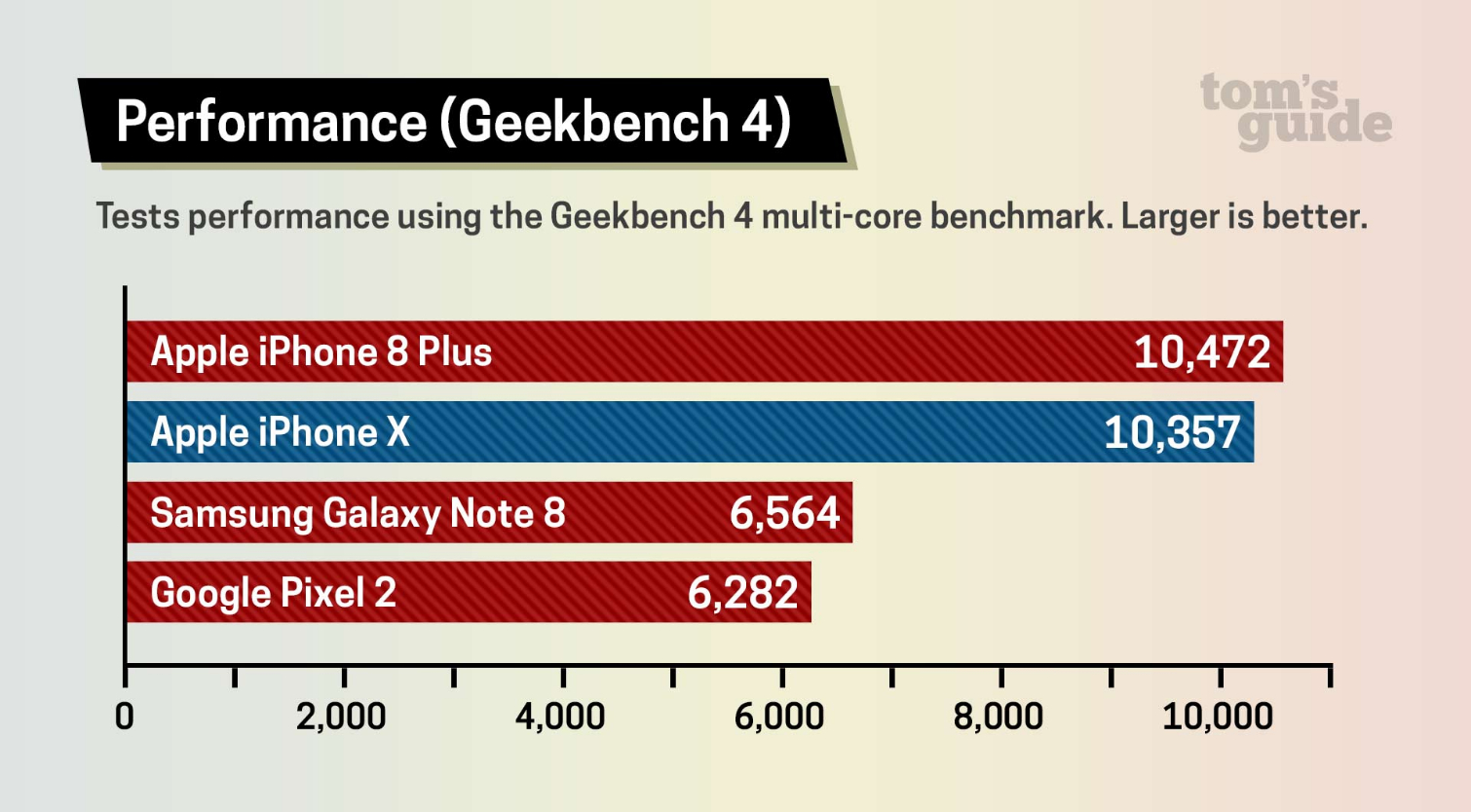
Apple's not kidding: when we tested the iPhone 8 and 8 Plus, we tallied respective scores of 10,170 and 10,472 in the GeekBench 4 test of general performance. The iPhone 8's score is 54 percent faster than what the Galaxy Note 8 turned in, meaning Apple's new devices are the fastest smartphones by some distance. The iPhone X scored right in between the iPhone 8 and 8 Plus.
The iPhone X was also neck and neck with the iPhone 8 and 8 Plus when editing a 4K video. Both the iPhone X and iPhone 8 Plus took 42 seconds for all three devices to transcode a 2-minute clip using the Adobe Clip app.
Battery Life
Apple claims that the iPhone X will last around 2 hours longer than the iPhone 7. And in our testing — which involves continuous surfing over LTE until the phone runs out of gas — the iPhone X came pretty close to that claim, lasting 10 hours, 49 minutes. That's 1:46 longer than the iPhone 7, which lasted 9:03. And it's an hour better than average smartphone fares on our battery test.
Still, the iPhone X is not the longest-lasting Apple phone. That honor goes to the iPhone 8 Plus, which turned in a time of 11:16, placing it on our list of longest-lasting smartphones. The iPhone 8 held on for a better-than-average time of 9:54.
Special Features
The iPhone 8 and X are the first two Apple smartphones to feature wireless charging, made possible by changing to a glass back for Qi-based charging.
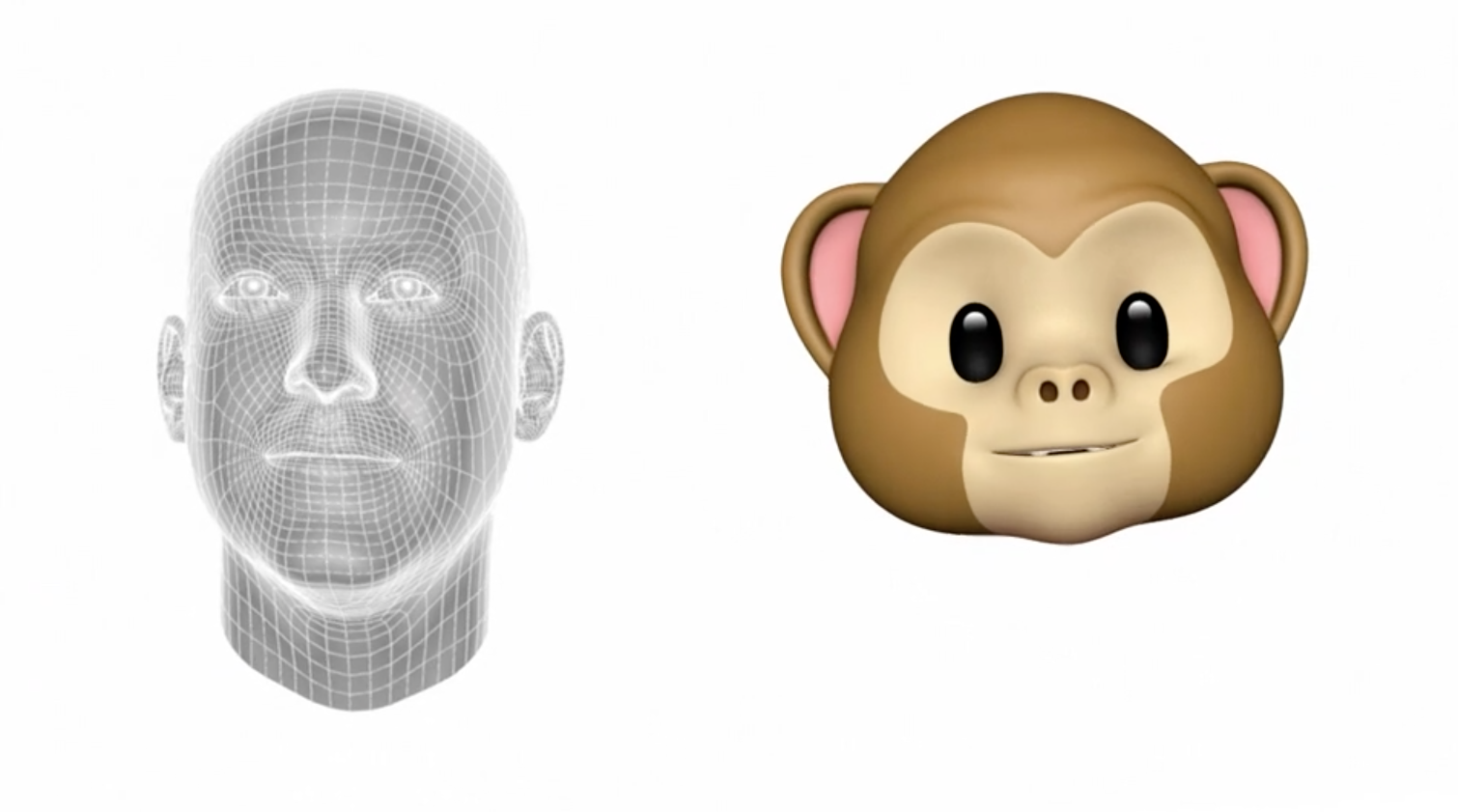
Apple's custom-animated emoji, dubbed Animoji, is an iPhone X exclusive, as only that phone includes the front-facing sensors that can capture each user's facial expressions. The depth-sensing cameras also enables new tricks in third-party apps like Snapchat.
Pricing and Storage
Coming in just shy of a grand with its $999 entry-level 64GB model, the iPhone X costs $1,149 when upgraded to 256GB of internal storage. The 8 Plus starts at $200 less, with its 64GB model costing $799 and its 256GB model running you $949. You'll spend $100 less than that for the smaller iPhone 8, which costs $699 for 64GB and $849 for 256GB.
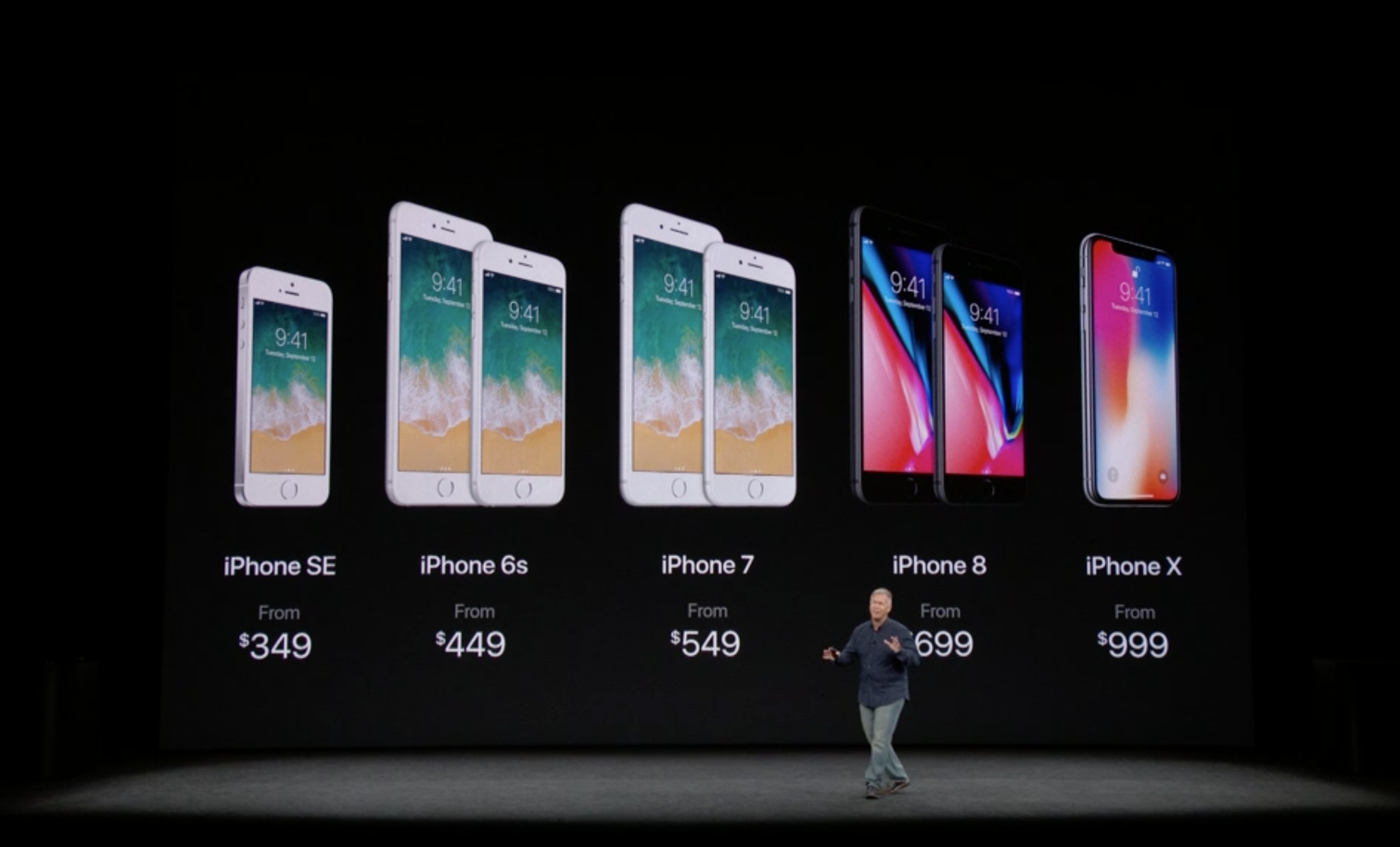
The iPhone 7 and 7 Plus, which include half as much storage as their iPhone 8 counterparts, cost as much as $200 less, as the 128GB iPhone 7 costs $649 (down from the $849 256GB iPhone 8), and the 32GB iPhone 7 costs $549. The 128GB iPhone 7 Plus goes for $769, and the 32GB 7 Plus costs $669.
Outlook
The iPhone X's nearly bezel-free design and OLED screen offers so much that it makes the iPhone 8 and iPhone 8 Plus look antiquated, but it's hard to say that the iPhone 8 Plus is not a great device. It offers the same speed you get with the X and most of the same camera perks. The iPhone 7 is a good deal at $549, but we'd prefer the bigger screen on the $669 iPhone 7 Plus if we were going to buy an older phone.
The best two iPhones right now are the iPhone X and the iPhone 8 Plus. The iPhone X has a sleeker design and more colorful OLED display, but the iPhone 8 is the better value for those looking to save a little dough and maybe put it toward extra storage.
Photo Credits: Shaun Lucas

Henry is a managing editor at Tom’s Guide covering streaming media, laptops and all things Apple, reviewing devices and services for the past seven years. Prior to joining Tom's Guide, he reviewed software and hardware for TechRadar Pro, and interviewed artists for Patek Philippe International Magazine. He's also covered the wild world of professional wrestling for Cageside Seats, interviewing athletes and other industry veterans.
-
carl_diaz Gee, for a few hundred bucks I can have blacker blacks, such a deal.... and spend another $100 bucks for a wireless intrusive charger.... COOL DUDE ...Reply
